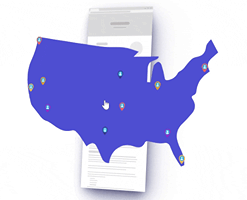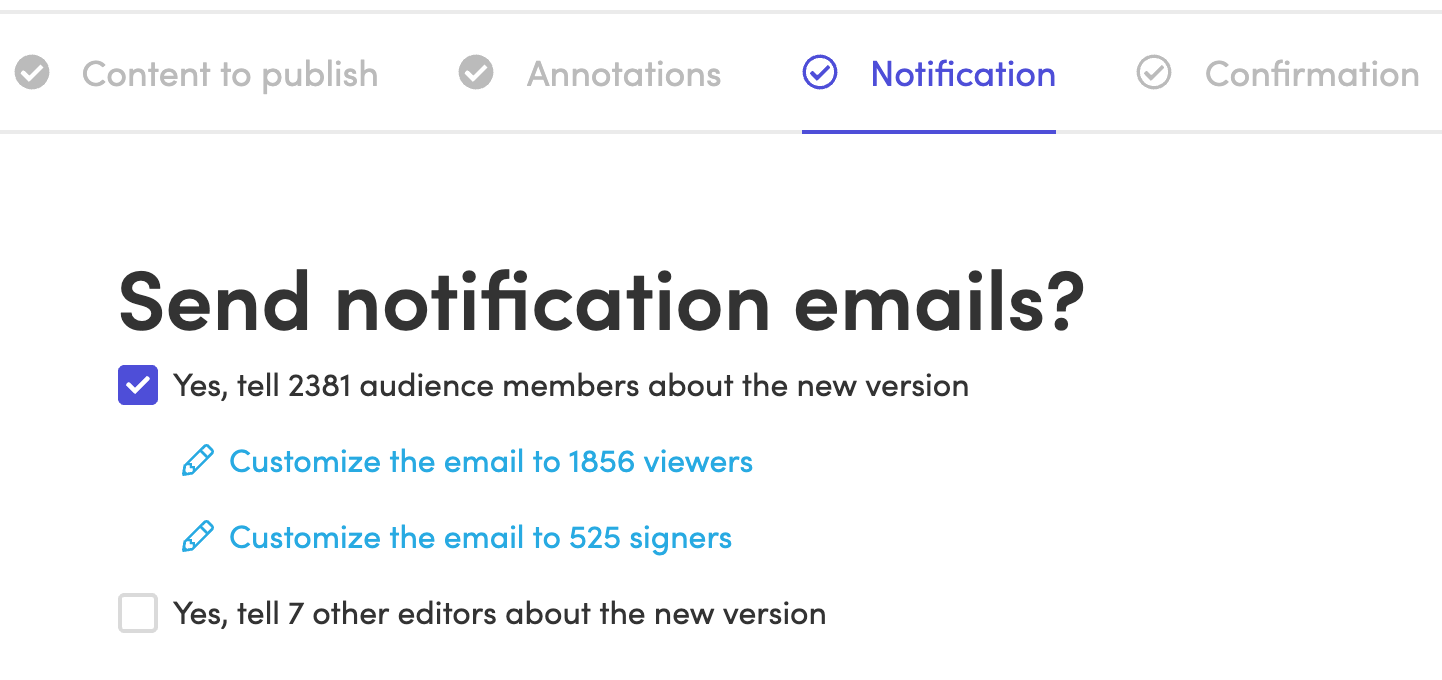When Should You Create an Employee Handbook?
At what point should your company create an employee handbook? There’s no simple answer to that question. When evaluating your company’s need for an employee handbook, you should take several factors into consideration.
In this article, we’ll go over the primary functions of an employee handbook, the circumstances that warrant one, and how you can start creating your own.
By the end, you’ll know if you need an employee handbook and how you can make it as impactful as possible.
The Function of an Employee Handbook
Before we get too far, let’s do a quick refresher on employee handbooks. There are three primary reasons you need an employee handbook.
- Showcase Your Company Culture: Your employee handbook is a great place to double down on your corporate culture by presenting your company’s mission, vision, and values. If your employees understand your company’s goals and priorities, they can make decisions that better align with them.
- Communicate Policies, Procedures, and Employee Expectations: Every employee should have the information they need to succeed at your company. After all, how can employees follow policies and procedures or fulfill expectations if they aren’t made clear? Whether it’s about conflict resolution or outside employment, everyone benefits when they know what’s up.
- Minimize Legal Risk: Your employee handbook can also provide legal protection by establishing policies and procedures that comply with employment laws. Plus, you promote fairness and trust when policies are consistently enforced, meaning every employee is held to the same standard.
At smaller organizations (<50 employees), your employee handbook is mostly focused on operational “how things work around here” content, with some important HR policies mixed in. At ~200 employees and above, after your company has hired their first full-time strategic HR role, your handbook’s purpose shifts more into the HR policy direction and your operational playbook content is stored elsewhere.
Learn more in our article, Why Should You Create an Employee Handbook?
Evaluating the Need for an Employee Handbook
So, you understand and agree that employee handbooks are important, but do you need one? It depends.
Handbooks aren’t legally required, though they do play a valuable role in helping companies comply with employment laws. For example, your employee handbook is a great place to inform employees of their rights, like those related to reasonable accommodations, harassment, the Family and Medical Leave Act (FMLA), and the various other state and federal leave laws. Many of these laws require you to notify employees both when they start and annually about certain programs or benefits that they’re eligible for by law. The easiest way to communicate these topics is to group them together in an employee handbook that you share with new employees and recirculate to everyone yearly.
Here are some things to consider when assessing your need for a handbook.
Factor #1 – Increasing employee headcount
If you only employ a handful of people, you may not be ready for an employee handbook. In most cases, you’ll want to develop your handbook as your business grows and you hire new employees.
More importantly, you want to document your policies when they’ve been properly identified and can be enforced. There’s no use in distributing policies without the means to administer them. Over-documentation can sometimes do more harm than good. If your organization is not ready to consistently enforce a written policy in all situations, it can be less risky to simply not have a written policy.
As your employee headcount increases, so does the complexity of managing your workforce. Here, an employee handbook becomes essential in preserving your company culture, maintaining consistency in policies procedures, and minimizing legal risk.
In the United States, for example, certain labor laws go into effect when your company reaches 5, 15, 50, or 75 employees. These thresholds require the inclusion of policies related to anti-discrimination, family leave, and equal employment, among others. For example, California employers of 5 or more employees, including those who work outside California, are required to provide harassment prevention training to all employees located in California every two years. This training typically includes creating an anti-harassment policy and accompanying procedure to deal with related issues.
Factor #2 – Multiple locations and/or remote workers
When you have employees in several locations, including remote workers, a handbook is vital in helping everyone get on the same page. It ensures that all employees, regardless of location or department, have access to the same information and guidelines, contributing to a sense of unity and inclusivity.
Plus, when your workforce spans multiple geographies, you have to comply with more employment laws, which brings us to the next factor.
Factor #3 – Growing legal requirements
The more legal requirements you’re juggling, the more organized you need to be. An employee handbook is critical in communicating anti-harassment policies, safety protocols, and more.
If you’ve got employees in multiple states, you need to comply with more employment laws. For example, different locations have their own rest break requirements, leave laws, and equal employment opportunity protections.
It’s crucial to have a go-to-resource as things get more complicated. Blissbook’s hyper-personalized content feature enables you to show employees only the policies relevant to them.

If you need legal content for your multi-state employee handbook, let us know. Not only can we help you with source content — we have services available to help you keep your content up-to-date with changing federal and state laws.
Factor #4 – Industry-related risk
Your industry and the nature of your work may amplify your need for an employee handbook. If you’re in the financial services industry, for example, you may need to communicate policies on insider trading and whistleblowing. Other companies might require policies addressing intellectual property rights or patient data as protected by HIPAA.
You may also be in a situation where you are audited on a regular basis, In some cases, the audit includes providing proof that certain employees have signed their employee handbook.
If your employees have access to a lot of sensitive information or you’re subject to audits, you will likely want to create a handbook sooner than similarly-sized companies in other industries.
Advice for Creating Your First Handbook
Let’s say you’ve decided your company is ready for its first employee handbook and you’re not sure what to include. If you’re still a small business, you’ll probably want to start with more generalized policies and procedures. For example, you can begin with policies that outline basic employee expectations and are easy to enforce, like attendance and punctuality and dress code.

If you create a robust library of detailed policies, you need to have the bandwidth to monitor and enforce said policies. Otherwise, you can easily create more confusion and risk than if you’d done nothing at all. A judge or jury won’t give you the benefit of the doubt if you’ve demonstrated that you do not equally and consistently enforce documented policies across your company. Employees might also view your policies as meaningless if there’s no follow through, so keep your handbook simple at first.
As your team expands, you may have additional bandwidth to oversee more formalized policies and procedures. When you start, be sure your handbook process is sustainable and manageable.
Implementing and Distributing the Handbook
Congratulations! Let’s say you’ve created your first handbook and are ready to launch. Consider organizing a special event or meeting to unveil the handbook to your employees. If you launch your employee handbook with a splash, you’ll better convey its importance. Make sure to let employees know the handbook aims to foster a fair, respectful, and positive work environment.
Depending on how you’ve been handling things up to that point, you may want to conduct a session that walks them through the handbook. Interactive Q&A sessions give employees an opportunity to clarify areas of uncertainty. Remember, the aim is to ensure that every employee not only reads the handbook, but understands it, too.
Read our How to Write Policies and Procedures eBook to learn more.
Adding to Your Employee Handbook
Your employee handbook isn’t a document you create and forget about. Instead, it’s a dynamic tool that needs regular attention to remain relevant and legally compliant — especially in your company’s early stages.
Once you’ve built your HR team, you’ll have more capacity to document and enforce your policies and procedures. Early on, you should establish a proactive process to regularly review and revise your employee handbook. At regular intervals, you can consider whether the policies are working as intended, whether you’re ready to add new policies (by choice or due to legal thresholds), and whether employees have raised concerns or suggestions regarding the handbook’s content. Law change alerts inside Blissbook can help, and we even have a service available where we’ll suggest updates based on changing laws. Get in touch with us for more information.
When you make changes, don’t forget to let your employees know. With Blissbook, it’s easy to notify employees of handbook updates.

Plus, the annotations feature makes it easy for employees to identify what’s changed.

Start Creating Your Employee Handbook with Blissbook
From showcasing company culture to ensuring legal compliance, a well-crafted handbook leads to a healthy, harmonious, and productive workplace. However, to reach its full potential, your handbook should evolve with your company. Regular reviews and updates help ensure your handbook remains a valuable resource for your team.
If you’re looking to streamline the process of creating and managing your employee handbook, Blissbook can help.
Don’t let the prospect of creating an employee handbook overwhelm you. Start your journey with Blissbook today.